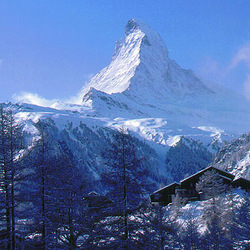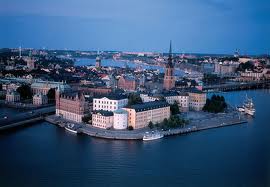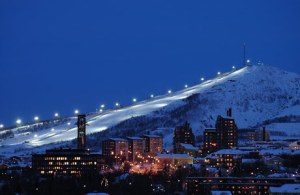 Having recently covered crime fiction from Norway, including books by authors not so well-known to English-language readers, I thought I would do the same for Sweden but from a slightly different perspective. Over the past year there have been repeated, often identikit, articles in newspapers and magazines as well as on blogs and internet sites that don’t usually cover crime fiction, about Nordic – largely Swedish – crime fiction. I write “identikit” because almost all these articles take as a starting point the exciting Millennium Trilogy by Stieg Larsson – and more recently, the similar-ish exciting Three Seconds by Roslund-Hellstrom (winner of the 2011 CWA International Dagger).
Having recently covered crime fiction from Norway, including books by authors not so well-known to English-language readers, I thought I would do the same for Sweden but from a slightly different perspective. Over the past year there have been repeated, often identikit, articles in newspapers and magazines as well as on blogs and internet sites that don’t usually cover crime fiction, about Nordic – largely Swedish – crime fiction. I write “identikit” because almost all these articles take as a starting point the exciting Millennium Trilogy by Stieg Larsson – and more recently, the similar-ish exciting Three Seconds by Roslund-Hellstrom (winner of the 2011 CWA International Dagger).
I do not intend to write here about these novels (you will probably be relieved to know), as Stieg Larsson in particular has been covered from every possible angle, with every last drop drained out of his novels and life-story by a range of opportunists, to screaming point. What I do intend to write about is the more typical Swedish crime fiction (in my experience), which is not usually a genre of breathlessly exciting, casually expressed thrillers, but is a more suspenseful, psychological and, yes, often gloomy world. Don’t think that Stieg Larsson or Roslund-Hellstrom’s Three Seconds is typical of Swedish crime fiction, because neither is (Three Seconds isn’t even typical of Roslund-Hellstrom’s earlier translated novels!).
PART ONE
I’ll soon begin highlighting Swedish authors who I think more “typical” than S Larsson, but first I should as usual mention Maj Sjowall and Per Wahloo, the originators of the modern crime-fiction genre (whether in Sweden or anywhere else). These authors wrote a series of ten books with the umbrella title The Story of a Crime, which followed the life of Martin Beck and colleagues as they investigate various cases (each one a take on a different crime subgenre) against a background of the crumbling of the 1970s Swedish welfare state much admired outside the country but less so by these Marxist authors. I mention these books for two reasons: one because they are not thrillers, even those that deal with bombs and other acts of group terrorism; and another because they influenced so many other Swedish crime writers to write their own novels in a similar style. First of these (to my knowledge) was Henning Mankell; subsequently authors such as Ake Edwardson and Kjell Eriksson started on their own 10-book series, well before Stieg Larsson decided to do the same (but only got as far as book 3).
I’ll go on to discuss these and some other authors whom I consider to be more typical of the output of the region – with the usual corollary that these are, of necessity, books translated into English.
Henning Mankell. First and until Stieg Larsson the most well-known of Swedish crime writers post Sjowall and Wahloo, his ten-book series about Inspector Kurt  Wallander of the Ystaad police focuses on issues facing Swedish society as well as the character of the lugubrious Wallander and some of his colleagues and family (particularly his daughter Linda). My own take as a reader is that Mankell is more interested in these issues than his rather silly crime plots: the first novel in the series, Faceless Killers (first published in 1991), was inspired by issues of immigration and racial prejudice that had not figured in Martin Beck’s era of the 1970s. Subsequent novels addressed many of modern society’s problems, but with a veneer of sadness and depression, such as Kurt’s relationship with his father and broken marriage. Linda, Kurt’s daughter, is initially a rebellious and troubled teenager, but gradually becomes the life-force of the books, most clearly articulated in the final novel of the series, The Troubled Man, in juxtaposition with the ageing Kurt’s memories and decline. [Mankell’s Wallander series was written over many years with long gaps in between; the author has also written books that are not part of this series and which feature his take on the global sociopolitical agenda far more stridently, as well as children’s books, plays and polemics. Of course there have been popular Swedish (2) and English TV series based on the Wallander books.]
Wallander of the Ystaad police focuses on issues facing Swedish society as well as the character of the lugubrious Wallander and some of his colleagues and family (particularly his daughter Linda). My own take as a reader is that Mankell is more interested in these issues than his rather silly crime plots: the first novel in the series, Faceless Killers (first published in 1991), was inspired by issues of immigration and racial prejudice that had not figured in Martin Beck’s era of the 1970s. Subsequent novels addressed many of modern society’s problems, but with a veneer of sadness and depression, such as Kurt’s relationship with his father and broken marriage. Linda, Kurt’s daughter, is initially a rebellious and troubled teenager, but gradually becomes the life-force of the books, most clearly articulated in the final novel of the series, The Troubled Man, in juxtaposition with the ageing Kurt’s memories and decline. [Mankell’s Wallander series was written over many years with long gaps in between; the author has also written books that are not part of this series and which feature his take on the global sociopolitical agenda far more stridently, as well as children’s books, plays and polemics. Of course there have been popular Swedish (2) and English TV series based on the Wallander books.]
Hakan Nesser is another author of a ten-book series whose first title, The Mind’s Eye, was published in 1993 (first English translation 2009); the first six have been translated and a seventh is coming up soon. Inspector van Veeteren and team are in an indeterminate country (I see it as the Netherlands but others disagree) and, like Sjowall/Wahloo, each book (and case) is about a different crime subgenre (legal thriller, “locked room”, secretive religious community, etc). Unlike Edwardson and Eriksson (see below), Nesser shares with Sjowall and Wahloo a bleak but very funny sense of humour; and a strong disillusionment by the main character in police work and the crimes he has to investigate. After book 6, Van Veeteren is poised to quit the police force and buy a bookshop, an interesting departure from the police-procedural norm. Hakan Nesser also writes another, more recent series about Inspector Gunnar Barbarotti, a Swedish police inspector of Italian descent. This series has not (yet?) been translated into English but the first book is called Human without Dog.
Ake Edwardson was an academic at the University of Gothenburg, where he sets his Inspector Erik Winter novels, of which I think five have so far been translated – starting in 1997 – with at least two to follow. Like Sjowall and Wahloo, these novels focus on a group of police detectives and their professional and personal interactions as they accrue evidence and talk through the progress (or lack of progress) of their cases. Winter is the youngest Inspector in the Swedish police force, and during the series becomes the father of a baby, with associated domestic challenges. Again like those of Sjowall and Wahloo, the books are about the problems of modern society – disaffected youths, unemployment, foreign “guest” workers, racial harassment, teenage prostitution and child abuse. The author also writes non-fiction and children’s novels, so depicts his younger characters vividly.
Kjell Eriksson, the same age as Edwardson, writes a police-procedural series set in Uppsala. Three of these novels (from mid-series) have been translated into US  editions, with a fourth one to follow later this year. Billed as “Ann Lindell” mysteries, these books really lost out from being translated out of order, not least because of the domestic situation of Ann, which is confusing for English readers who have not read the early books (the first one was published in 1999). Erkisson has written 10 crime novels, but I don’t know if they are all part of this series. Of the three I’ve read, these books tend more to the pyschological and bleak than focusing on social comment, with quite detailed investigations of the foibles and worse of various characters, though of course unemployment, immigration and so on are in the background of the cases the police investigate.
editions, with a fourth one to follow later this year. Billed as “Ann Lindell” mysteries, these books really lost out from being translated out of order, not least because of the domestic situation of Ann, which is confusing for English readers who have not read the early books (the first one was published in 1999). Erkisson has written 10 crime novels, but I don’t know if they are all part of this series. Of the three I’ve read, these books tend more to the pyschological and bleak than focusing on social comment, with quite detailed investigations of the foibles and worse of various characters, though of course unemployment, immigration and so on are in the background of the cases the police investigate.
Helene Tursten is the last author of the overt Sjowall/Wahloo successors I’ll discuss in this post. She writes about Inspector Irene Huss of the Gothenberg police, with the first book, Detective Inspector Huss, first published in 1998. Unfortunately only the first three titles have been translated into English – in US editions. A fourth is apparently due out in English next year. Irene is a very attractive character – independent, happily married mother to two teenage girls, clever and intuitive. The other two translated books, The Torso and The Glass Devil, are increasingly bleak, and possibly a trademark is that Irene visits Denmark and England, respectively, in them- making me wonder if she goes to a different country in each book. Inspector Huss is also a very popular TV series in Sweden. I am very fond of these books and recommend them highly as excellent examples of classic crime fiction with a modern take – as well as a great female role model in the main character.
The authors above wrote their series starting in 1991 (Mankell), 1993 (Nesser), 1997 (Edwardson), 1998 (Tursten) and 1999 (Eriksson). Stieg Larsson’s first Millennium Trilogy novel, The Girl With the Dragon Tattoo, was first published in Sweden in 2005, and in the UK January 2008.
PART TWO.
I’ll move on now to Swedish crime fiction authors who don’t follow the police-procedural route originated by Sjowall and Wahloo. Just as Mankell is the first “icon” of these, Kerstin Ekman is perhaps the best equivalent for the rest. Ekman is more of a literary than a crime novelist, writing about a particular region in the north of the country, but her 1993 novel Blackwater (containing some characters from other novels) was the first of this set to be translated into English. I have read it but found it very dense and quite hard-going, perhaps because I had no earlier context for the large cast of characters. At its heart, it is a book about a woman who goes missing while camping, her past, and the effects of this situation on the small community of Blackwater. Its plot is very, very sad in one particular. I don’t know if this book has been influential to subsequent Swedish crime novelists, but it seems to me to be the origin of many common elements – isolation, a hard climate, a struggling small community, characters suffering inner despair or hiding deep secrets, and so on – while being on no level sensationalistic. To learn more about this fascinating author and her fictional world, please read the 2010:1 issue of the Swedish Book Review, featuring articles about her and some new translations of her work.
Asa Larsson is writing six (I think) novels about Rebecka Martinsson, a financial lawyer initially based in Uppsala who comes from Kiruna, in the far north of the country. Sun Storm (2003, aka The Savage  Altar) follows Rebecka’s attempts to help an old childhood friend who is accused of murder, in the process having to confront the horrors of her own childhood. One of the many strengths of this haunting novel is the depiction of the old people in the northern village, and their way of life, in particular an old neighbour Sivving. The next two books (The Blood Spilt and The Black Path) follow these themes of small communities, religious or spiritual beliefs, and the struggle of a young woman to overcome her internal demons and some real threats to her life. The detective elements are satisfying too, with Anna-Maria Mella (mother of several children and heavily pregnant in book 1) and her increasingly complicated deputy, Sven-Erik. After a gap of 3 years, I am delighted that MacLehose Press has taken over the UK publication of this series and that the next book, Until Thy Wrath Be Past, is out in the UK this month. [Rebecka Martinsson’s name is said to be a tribute to Sjowall and Wahloo’s Martin Beck.]
Altar) follows Rebecka’s attempts to help an old childhood friend who is accused of murder, in the process having to confront the horrors of her own childhood. One of the many strengths of this haunting novel is the depiction of the old people in the northern village, and their way of life, in particular an old neighbour Sivving. The next two books (The Blood Spilt and The Black Path) follow these themes of small communities, religious or spiritual beliefs, and the struggle of a young woman to overcome her internal demons and some real threats to her life. The detective elements are satisfying too, with Anna-Maria Mella (mother of several children and heavily pregnant in book 1) and her increasingly complicated deputy, Sven-Erik. After a gap of 3 years, I am delighted that MacLehose Press has taken over the UK publication of this series and that the next book, Until Thy Wrath Be Past, is out in the UK this month. [Rebecka Martinsson’s name is said to be a tribute to Sjowall and Wahloo’s Martin Beck.]
Karin Alvtegen, another favourite author of mine, has written five non-series novels of psychological suspense, of which I most highly recommend Missing (2000, foreshadowing The Girl Who Played With Fire), Betrayal (2003) and Shadow (2007), all very different – Missing is very exciting, but the novels are bleak, grim, and not always leaving the reader with any hope. At a recent literary event, the author spoke about her increasing abhorrence with violence and the way it is so casually depicted on TV and other media, so has challenged herself to write a suspenseful book with no violence. I am sure she can do it, and the result will probably be my perfect crime novel!
Liza Marklund is another firm favourite of mine, in her superb depiction of a journalist, Annika Bengtzon, from her sad childhood and days as in intern with a ghastly boyfriend, desperately trying to keep her place as a subeditor in a newspaper office, to her role as a well-known journalist struggling to produce “real” stories with integrity while the media industry plunges downmarket, and equally struggling to be a good parent to two young children. Her friend Anne works in TV so we also see the crushing effects of that industry on the moral values and lives of those working in it. Annika’s job brings her into contact with dramatic stories of course, and her senior “deep throat”-like contact in the police force does her investigations no harm. She stays one step ahead of the game in the world of newspaper politics but it isn’t so clear that she’ll manage the same in her personal life. The first four books in the series were published a while ago; after a gap they are now being republished and the new novels (there are 9 so far) being translated for the first time, beginning with last year’s Red Wolf. The author is interested in journalistic values, political/historical issues (for example, sex-trafficking is the theme of the strongest (in my view) novel in the series, Paradise, and Red Wolf examines whether modern terrorism could have originated in the anti-war protest movements of the 1960s and 1970s); less so in providing “solutions” to the crimes, which are usually tossed over to the police to sort out. Hence, Liza Marklund is the perfect “anti-overblown ending” crime author – and for all these reasons is one of my very favourites.
Inger Frimansson writes very good psychological novels: so far translated are a pair and a standalone (I’ve reviewed them at Euro Crime). Disturbed protagonists, inadequate police investigations, small and superstitious communities – it is all here.
Johan Theorin is writing a marvellous quartet set on the small island of Oland, the first one published in 2007. In common with other novels in this second “tranche”, he writes so well about the old communities and residents (especially the 80-something fisherman Gerlof), embedding his novels with the superstitions and legends of the island. I can’t recommend the first three novels highly enough (the fourth one is not yet written); these novels are crime fiction at its very best. (See my Euro Crime reviews of them.)
Camilla Ceder is a new (to English speakers) novelist who on the basis of her first novel, Frozen Moment, fits into the Kersten Ekman mould. The novel is a vivid yet freezing portrait of small communities in the countryside round Gothenberg, a mystery that has its roots in the past, as many good mysteries tend to do. Both the police characters and the various witnesses and residents are portrayed with subtlety and individuality, so I am looking forward to seeing how this series develops.
AND THE REST
Two favourite Swedish authors who don’t seem to fit neatly in either of these categories are Camilla Lackberg and Mari Jungstedt. The former writes a series set around Fjallbacka, so far there are nine titles (five translated) beginning with The Ice Princess (2008). The protagonist is Erika Falk, a journalist and true crime author, who gets involved in various local cases, not least because of her relationship with Patrik Hedstrom, the sharpest of the local police force (though he isn’t as sharp as most readers!). Part crime novels and part domestic romances, these books are very popular. Mari Jungstedt sets her novels on the island of Gotland. Like Lackberg, they have police-procedural elements in the team led by Inspector Anders Knutas, and a strong romance theme involving Stockholm-based TV reporter Johan Berg and Emma, a woman who lives on the island. There are nine books in the series so far, of which the first five have been translated. Both these series contain dark themes and other typical elements of crime fiction, but they are both more preoccupied with the romantic lives of their characters than is common in a crime novel. Both series are very readable and involving, addressing many of the same contemporary themes of social and personal ills that figure in most crime novels; I very much enjoy them both.
Are these the only Swedish crime novels I’ve read? No. But they all started before Stieg Larsson began publishing his novels, or in a couple of cases began to publish at the same time. None can therefore be said to have been influenced by the Stieg Larsson phenomenon, and all can be read and enjoyed in their own right. A few details:
Mons Kallentoft’s first novel Midwinter Sacrifice will be out soon: I have read it  and think he is an author worth looking out for – he writes about small-town life and has a female police detective as a main protagonist. There is also a slight supernatural element.
and think he is an author worth looking out for – he writes about small-town life and has a female police detective as a main protagonist. There is also a slight supernatural element.
Lars Kepler’s The Hypnotist received a lot of publicity when first published (the authors are a husband and wife team) but my view is that although it has some good elements, it degenerates into a horror-thriller that I found too commercially driven for my taste, more hype than substance.
Lief G W Persson’s books are being translated now. The one I read, From Summer’s Longing to Winter’s End, was far too long and tedious for its content. It was as if someone had taken the “establishment conspiracy” elements common to the LeCarre end of the genre (as used by Stieg Larsson in The Girl Who Kicked the Hornet’s Nest), created a few onion skins out of them, and added a bit of brutality to a slowly moving whole. It is the first of a trilogy but I don’t think I have the will to find out more about which spook turns out to be not as we thought, etc.
Roslund-Hellstrom’s Box 21 (aka The Vault) is perhaps the bleakest and most anger-making novel I’ve read in a long time, focusing on sex-trafficking and police corruption. Very good indeed.
Arne Dahl’s well-regarded novels will soon be available to English readers in US editions – I for one am looking forward to those.
The Unit by Ninni Holmqvist is not really a crime novel in the sense of having a perpetrator or much suspense – it has elements of science fiction – but I do highly recommend it as a haunting, thought-provoking study of both character and society.
More Swedish crime fiction authors (and reviews of some of their books) are at Euro Crime’s regional listing. If any readers of this post can recommend other Swedish authors who have been translated into English not mentioned here, I’d be very grateful and happy to read their books. [I should also note that there are writers from other countries who set novels in Sweden, of course. One I would recommend as being in the Eckman tradition is Let the Northern Lights Erase Your Name by Vendela Vida, though for me it does not quite have the same resonance as the books discussed here written by Swedish authors. There is also a recent novel called Meet me in Malmo by Torquil MacLeod which is worth checking out.]
Thanks are due to the many translators who have bought these books to English-language readers: Laurie Thompson, Steven T Murray/Reg Keeland/McKinley Burnett, Joan Tate, Anna Patterson, Tiina Nunnally, Ebba Segerberg, Neil Smith, Marlaine Delargy and many others.

Maxine, another excellent recap, as always. Cheers.
Brilliant as always, still have a few of these to try but I will get there. I reckon between you Margot and you could start run a whole degree in crime fiction
Maxine – What a superb post! I am struck by its depth and by how informative it is. Insightful, too, and so thoughtful. Outstanding!
Drained Maxine? Sucked, squeezed and scraped it seems to me.
Excellent, excellent piece, Maxine.
Wow, Maxine! We can now refer anyone who wants to know anything about Swedish crime fiction to this definitive post. Excellent work.
I just wish those newspapers would ask you before they went on to copy each other. A Sunday supplement any magazine should be proud of.
I really think you will enjoy Arne Dahl who is often compared to Sjöwall and Wahlöö, and I am confident that Nesser´s new Barbarotti series will be translated also. Like Theorin and Fossum, he spends much time on developing his characters, the interaction between them and the consequences of crime, but I think his characters are even better than Theorin´s, and his stories are more hopeful than Fossum´s.
Maxine–Many thanks for the exhaustive review of Swedish crime fiction.
The only writers –I can add to your list are.
1. John Ajvide Lindqvist –who is not a crime writer—more horror /vampire-
with acute social commentary.
2. Stefan Teganfalk –Anger Mode –is just out.
3.Kristina Ohlsson. I have just returned from Stockholm,and she
is currently very popular in Sweden –with 2 of her books in the top 10.
Her debut in English —Unwanted—is out at the end of September.
Thanks, Simon- I’ve avoided Lindqvist to date because of the vampire themes but will try the others you recommend.
Thanks, Maxine. A really superb post.
Thanks, Maxine for a very informative and analytical post. Due to this and a few other superb websites, I have read several authors listed here, including Nesser, whom I like much, Theorin and Marklund,, all good.. Helene Tursten is excellent and I await her next book. So, too with Asa Larsson, and others. Sjowall and Wahloo wrote perfect mystery/police procedurals. Have put Ceder, Jungstedt, Dahl and others on my TBR list.
Just to chime in–thanks for a wonderful run down. Handy to print this out and have close by when making my choices, for which I seem very spoiled. I am absolutely going to read Sjowall and Wahloo as soon as I get caught up on my reading. I did just finish Liza Marklund’s Studio 69 today and liked it very much–I also like that her books are less whodunnits (though you get to know the solution even if the perpetrator doesn’t exactly get caught) than examinations of society’s ills. Lots more authors to explore here!
Thank you for such a helpful post! I’ve read a few of the books you mention and am about to read my first Martin Beck book, but you’ve helped me to understand a bit more about the development of the Swedish crime novel. Thanks!
BRAVA!
The information and the writing of this post belong in a prestigious article somewhere. Publish! A magnificent post and much appreciated.
I especially appreciated that you included Mari Jungstedvt. Only one of her books is available in the US, as far as I know, but I liked Unseen and would be curious to read more. Your post will be my guide to further forays into Swedish crime fiction and mystery.
Judith (Reader in the Wilderness)
Thanks, all, for your comments and apologies for lack of replies- I have been away for a few days. I am glad the post is useful!
Maxine I hope you enjoyed your time away. Useful definitely, I shall be plagiarizing it regularly. ;o)
Feel very free Norman, I’d be honoured, not least because of your personal knowledge of the region and especially as you are the very man who bought Sjowall and Wahloo to my attention in the first place!
Pingback: Recommending Book Blogs #2 « It's a crime! (Or a mystery…)
Pingback: Book Review: Scandinavian Crime Fiction, eds Nestingen and Arvas | Petrona
Pingback: Happy new year | Petrona
Pingback: Scandinavian crime fiction: the book | Petrona